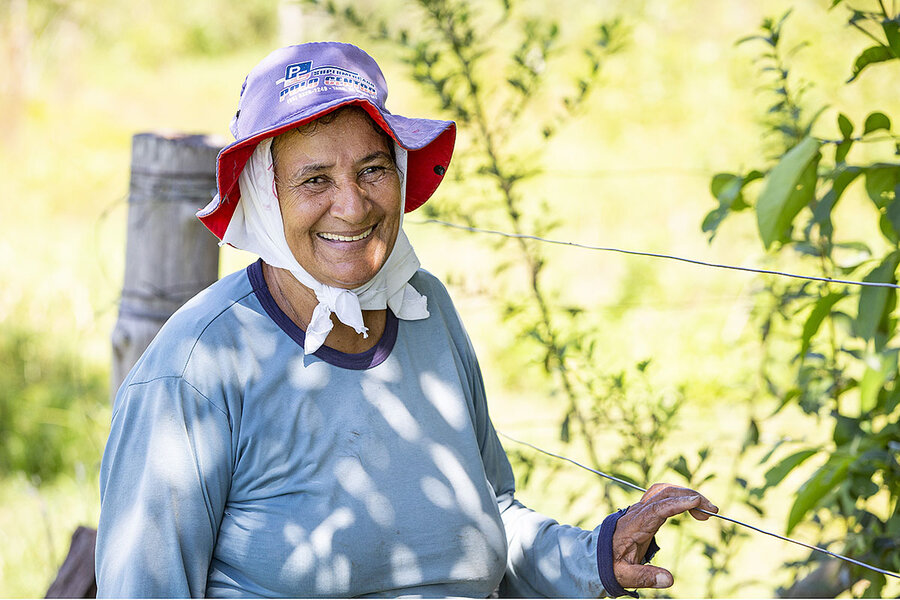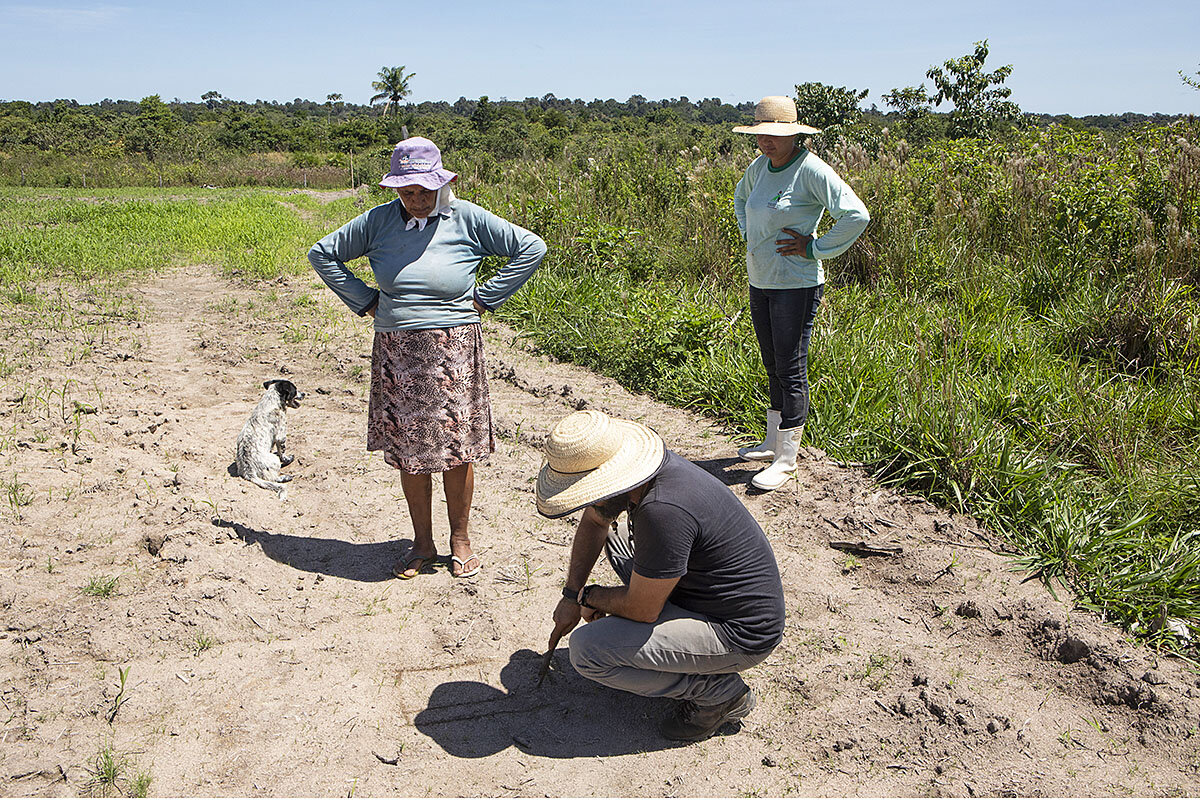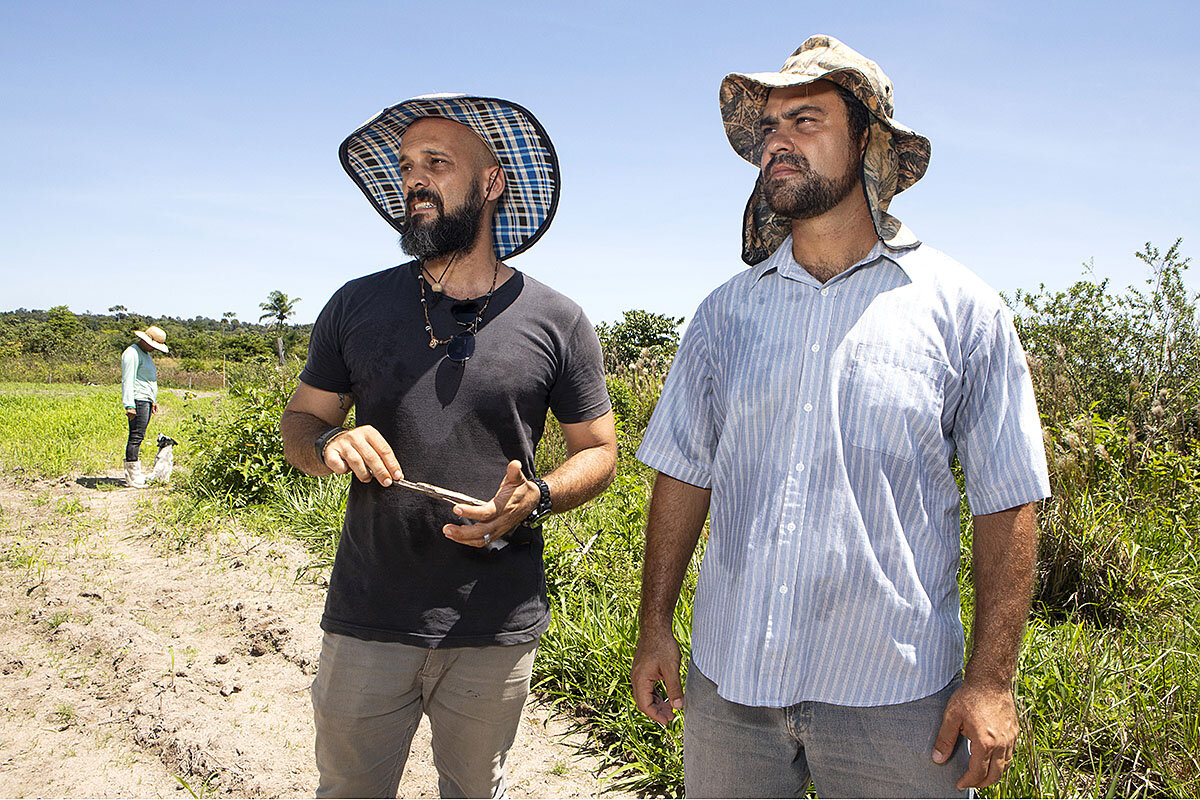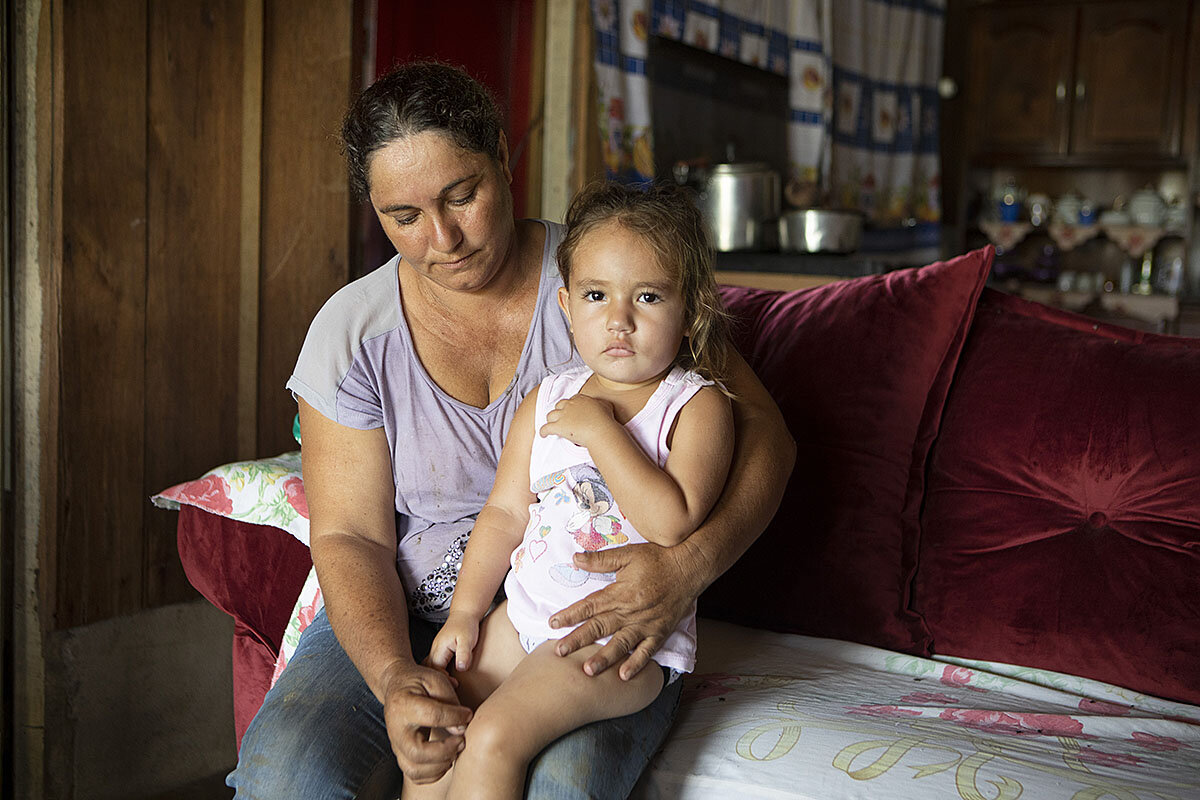The secret to sustainably farming the Amazon? The ‘miracle’ Inga tree.
Loading...
| Carlinda, Brazil
Her neighbors call her crazy. They say she is wasting her time, and worse, squandering her land.
But Vanda Melo de Souza keeps digging to plant her Inga trees.
It’s the first time that the 62-year-old has owned property in her life. And she could be focusing the 8 hectares (20 acres) she has to farm exclusively on pasture for her dairy cows or crops to sell – for money she badly needs.
Why We Wrote This
Across much of the world, conventional wisdom says you can have farming or you can have forest, you can’t have both. In the Amazon, a local NGO is challenging that wisdom – and changing views.
But she’s taking the longer view with a local nongovernmental organization called Instituto Ouro Verde, or Green Gold Institute, that works with smallholders in the “arc of destruction” in the southern Amazon to implement full-scale silvopastoral systems that integrate tree crops, forage, and livestock. At the heart of the project, begun in 2018, is the Inga tree, a so-called miracle species for its ability to keep soil fertile – and improve livelihoods by mimicking the forest dynamic that was lost to big agribusiness.
Across this region of northern Mato Grosso, trees have historically been viewed as obstacles to agricultural progress. From the early days when farmers were first lured here to clear the Amazon to more recently as soy plantations expand evermore, trees have been “in the way.” But the Green Gold Institute argues that trees can help increase incentives for smallholders, and prevent renting or selling off to industrial agriculture.
“Our No. 1 challenge is changing views,” says Saulo de Souza, a researcher at the Green Gold Institute and at the College of Life and Environmental Sciences at the University of Exeter in the United Kingdom. “Trees are our friends. They are not our enemies. They do not harm.”
Ms. Melo de Souza stands with a team from the Green Gold Institute on a recent day, a hat protecting her head from the relentless sun, her skirt and long-sleeve shirt spattered in mud. They map the rows of plantings for the 3 hectare project with a stick in the dirt. Her dog takes cover from the heat wherever he can, in the shade of ragged bushes, burying himself under the sandy earth.
“People think we’re losing time, but it’s not losing time. Imagine how beautiful it will be with these trees here. How much cooler it will be for the cattle,” she says. “I want to be part of making things right here.”
The land here is badly degraded from decades of expansive grazing or mismanagement. First cleared for timber and then cattle, land is increasingly being converted into soy production as demand booms. Soy plantations extend to the horizon. But 80% of farmers here are smallholders. Officially that means they own less than 400 hectares of land but most have 50 hectares or less, says Dr. de Souza. The Inga tree offers an option for poor landowners who don’t have access to higher-tech solutions or equipment that is helping other farmers transform degraded pasture.
Toby Pennington, a professor of tropical plant diversity at the University of Exeter who works on the Inga project, says it’s called a “miracle tree” for its ability to restore the soil, making it more productive, while providing shade to crops and cattle. “It makes it viable for small farmers to stay on the land, and not rent it out to big landowners,” he says.
Alongside reforestation – they estimate they’ve planted a million trees in the last decade, or about 2,700 hectares of forest – the NGO helps small farmers get their milk and fruits and vegetables to local markets and offers microcredit to start small businesses. Ms. Melo de Souza is managing five pigs, five cows, and 20 chickens, as well as growing orange and acai trees, pineapples, and cassava, and managing a seed bank – in addition to growing Inga.
“We realized there was a lot of potential for family farmers to increase production without destroying the forest,” says Vinicius Teixeira Arantes, a board member and former president of the Green Gold Institute. “And that makes communities stronger, empowering women to be part of the solution, and have a voice in the community.”
The women in this settlement in the municipality of Carlinda used to be considered part of the problem – the landless poor with nowhere to go. Next door to Ms. Melo de Souza sits Sirlene Machado’s home. She had spent nearly half of her 41 years living outside – under a bridge with her parents and her 12 siblings, and later 10 years camping alongside the road, with the rest of the 100 families on this settlement – before the government granted them each a parcel of land.
Almost her entire adult life she has farmed someone else’s land. Now she’s in charge of an 8 hectare property, the major source of income of which is milk.
But reforesting the land is part of the vision she sees for her children and grandchildren. “To have trees, when I walk in the sun, I feel the shade. It feels so good. And it’s good for the animals, the air, everything. You can do both, grow forest and raise cattle.”
“Some people think it’s craziness,” she says. “I don’t see it as craziness. I only see an opportunity.”
This story is part of a three-part series.
Part 1: Who owns the Amazon?
Part 2: Saving the Amazon: How cattle ranchers can halt deforestation
Part 3: The secret to sustainably farming the Amazon? The ‘miracle’ Inga tree.









